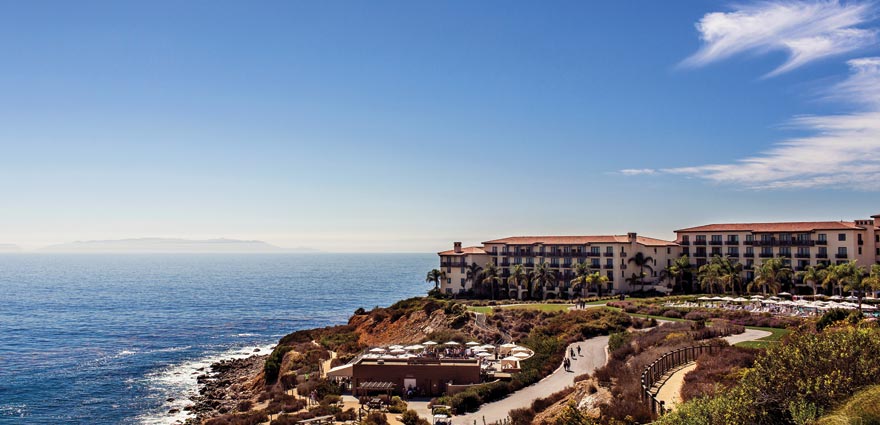It enacted the nation’s first auto emissions standard in 1966 and pioneered policies and technologies that have cut greenhouse gas emissions, protected natural resources and made sustainability a household word. Take a look around the state’s stunning landscapes – the light-dappled vistas of Yosemite Valley or the curving coastline of Santa Monica Bay – and it’s no wonder that Californians have stepped up to protect their world-famous environment.
Now, California is redefining what it means to travel sustainably by popularizing best practices that have helped hotels, restaurants, attractions, airports and rental car companies cut carbon emissions and reduce environmental impacts.
“The California tourism industry is the most forward-thinking tourism industry on the planet. Sustainability is not just a competitive issue. It’s much deeper than that. We need to collaborate on a national front. Our voice can lead other industries, not just tourism.”
- Resorts such as the Ranch at Laguna Beach have innovated zero waste procedures that reduce the amount of trash sent to landfills.
- Restaurants such as Fish in Sausalito are protecting local environments and workforces on which food service businesses depend.
- Hotels are eliminating single-use plastics and reducing water consumption throughout their properties.
- Destination marketing organizations are helping communities both welcome visitors and protect the culture, hiking trails and other treasures that attract people in the first place.
NOT JUST ‘THE RIGHT THING’
Infusing sustainability into a nearly $150 billion state tourism industry presents a powerful demonstration effect for the rest of the world, and California is already shaping how travel and hospitality businesses globally are approaching sustainability.
Visit California believes that sustainable tourism isn’t just the right thing to do as the planet copes with more intense wildfires, droughts, hurricanes and other climate change-triggered disasters. Lowering the carbon impact of travel, protecting natural resources and experiences also top the list of priorities for a growing number of travelers, especially younger travelers.
In a poll conducted by Booking.com of Generation Z travelers born between 1997 and 2012, 54 percent responded that environmental impact was an important factor when deciding where and how to travel. Another Booking.com poll found that 83 percent of respondents viewed sustainability as a vital consideration in their travel decisions.
The consulting firm McKinsey found in a 2020 survey that 83 percent of C-suite executives and investors said that companies with a positive environmental, social and corporate governance story would likely gain value over the next five years. The message is clear, at least when it comes to the growing importance of sustainability in business perceptions: Sustainability isn’t a nice-to-have, it’s a must-have.
“We are turning the corner,” said longtime San Francisco-based travel writer Spud Hilton. “The fact that Google wants to add a green leaf to listings for (sustainable) hotels is huge. ... The fact that it’s there at all shows that some people are considering it.”
Hilton said sustainability concerns are undeniably a central part of the industry conversation. One clear sign of that focus is a sustainable tourism declaration presented by the World Travel & Tourism Council at the 26th UN Conference of the Parties, or COP 26, held in Glasgow, Scotland last fall. The declaration committed the hospitality industry worldwide to cut greenhouse gas emissions in half by 2030 and achieve net zero carbon emissions by 2050 at the latest.
In California, the industry’s growing emphasis on sustainability, in part, reflects the state’s physical and political realities. Wildfires have become more common and devastating to tourism destinations. Sea-level rise is threatening coastal communities such as San Francisco.
California policymakers are advancing more stringent regulations on clean energy and greenhouse gas emissions as they try to both avoid the direst consequences of climate change and build a next-generation clean energy economy. The most ambitious state greenhouse gas goals include achieving statewide carbon neutrality by 2045, 100 percent zero-emission vehicle sales by 2035, and reducing greenhouse gas emissions to 40 percent below 1990 levels by 2030. Cities such as San Diego, Encinitas and Berkeley have banned the use of single-use plastic containers and straws, while San Francisco joined other cities in 2020 in banning natural gas use in new buildings.
Visit California is helping the industry get ahead of the sustainability curve though its role as an educational resource and convener.
That work has included organizing workshops and webinars to help destination stewardship organizations craft strategies for getting the message out about responsible travel. It has meant helping businesses strengthen their resilience against future disruptions such as the shutdowns triggered by the coronavirus pandemic. Visit California has also helped organizations gather the input and other data they need to understand the priorities of local residents and businesses – an essential component of any sustainability plan.
The organization is drafting a series of ambitious strategic tourism plans for each region of California, and gathering resident sentiment data to inform them.
Finally, Visit California is helping to share the stories of businesses and destination stewardship organizations that are integrating sustainability into their operational DNA including how they work with suppliers, operate their facilities and manage the flow of visitors during peak seasons.
That storytelling piece is integral to both appealing to the growing ranks of sustainability-minded travelers considering destinations and also signaling to businesses throughout California’s hospitality industry that they have plenty of models to follow whenever they choose to pursue sustainability in their own operations.


